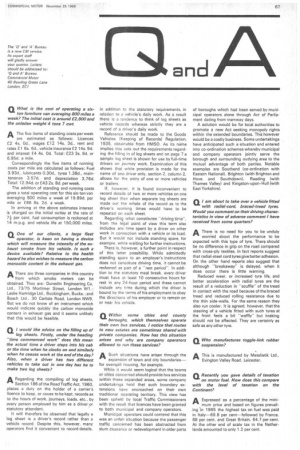Q I would like advice on the filling up of
Page 69

If you've noticed an error in this article please click here to report it so we can fix it.
log sheets. Firstly, under the heading "time commenced work" does this mean the actual time a driver steps into his cab or the time when he clocks on and similarly when he ceases work at the end of the day? Also, when a driver has two different vehicles to take out in one day has he to make two log sheets?
A Regarding the compiling of log sheets,
Section 186 of the Road Traffic Act, 1960, places a duty on the holder of a carrier's licence to keep, or cause to be kept, records as to the hours of work, journeys, loads, etc., by every person employed by him as a driver or statutory attendant.
It will therefore be observed that legally a log sheet is a driver's record rather than a vehicle record. Despite this, however, many operators find it convenient to record details, in addition to the statutory requirements, in relation to a vehicle's daily work. As a result there is a tendency to think of log sheets as vehicle records whereas strictly they are a record of a driver's daily work.
Reference should be made to the Goods Vehicles (Keeping of Records) Regulation, 1935. obtainable from HMSO. As its naime implies this sets out the requirements regarding the filling in of log sheets and on page 7 a sample log sheet is shown for use by full-time drivers on journey work. Examination of this shows that while provision is made for the name of one driver only, section 2. column 2, allows for the entry of one or more vehicles or trailers.
If, however, it is found inconvenient to record details of two or more vehicles on one log sheet then when separate log sheets are made out the whole of the record as to the driver's working times would have to be repeated on each sheet.
Regarding what constitutes -driving time", from the legal point of view this term also includes any time spent by a driver on other work in connection with a vehicle or its load. But it would not include standing spare. for example, while waiting for further instructions.
There is. however, a further point in respect of this latter possibility. While admittedly standing spare to an employer's instructions does not constitute driving time, it cannot be reckoned as part of a "rest period-. In addition to the statutory meal break, every driver must have at least 10 consecutive hours for rest in any 24-hour period and these cannot include any time during which the driver is bound by the terms of his employment to obey the directions of his employer or to remain on or near his vehicle.












































































































